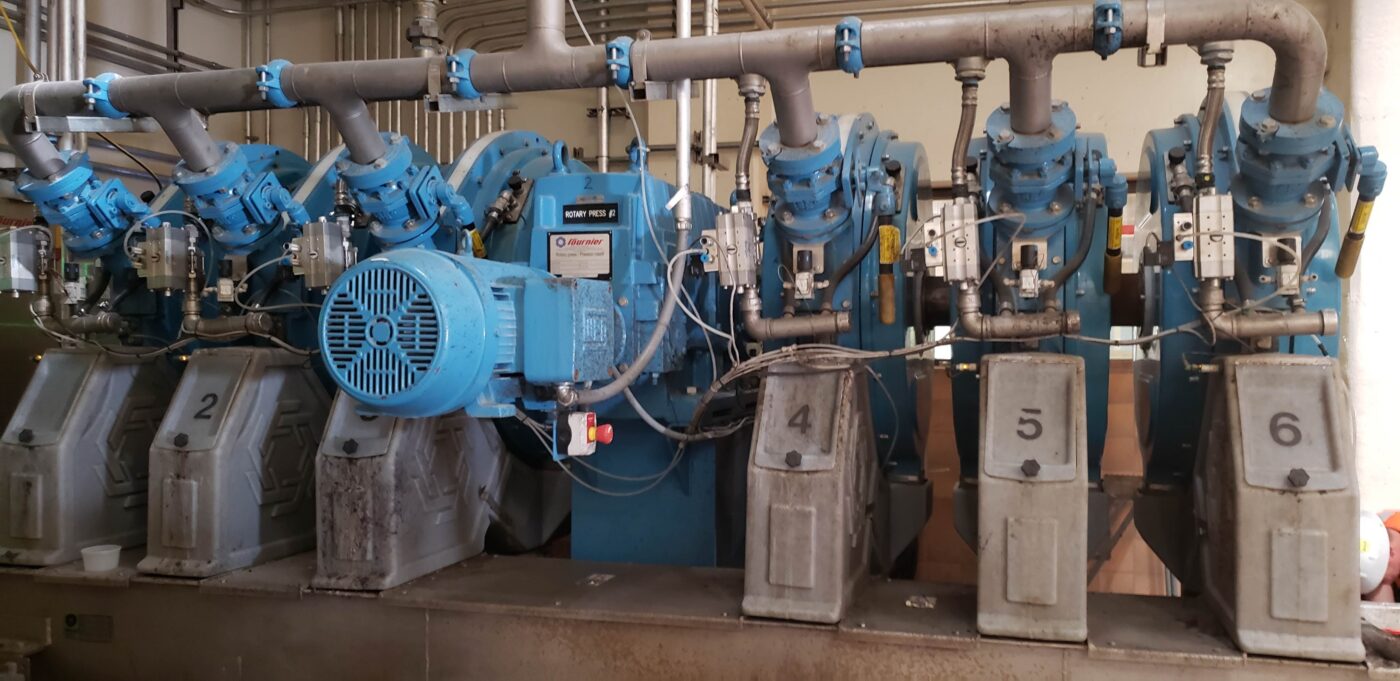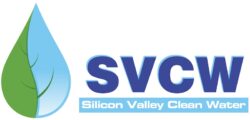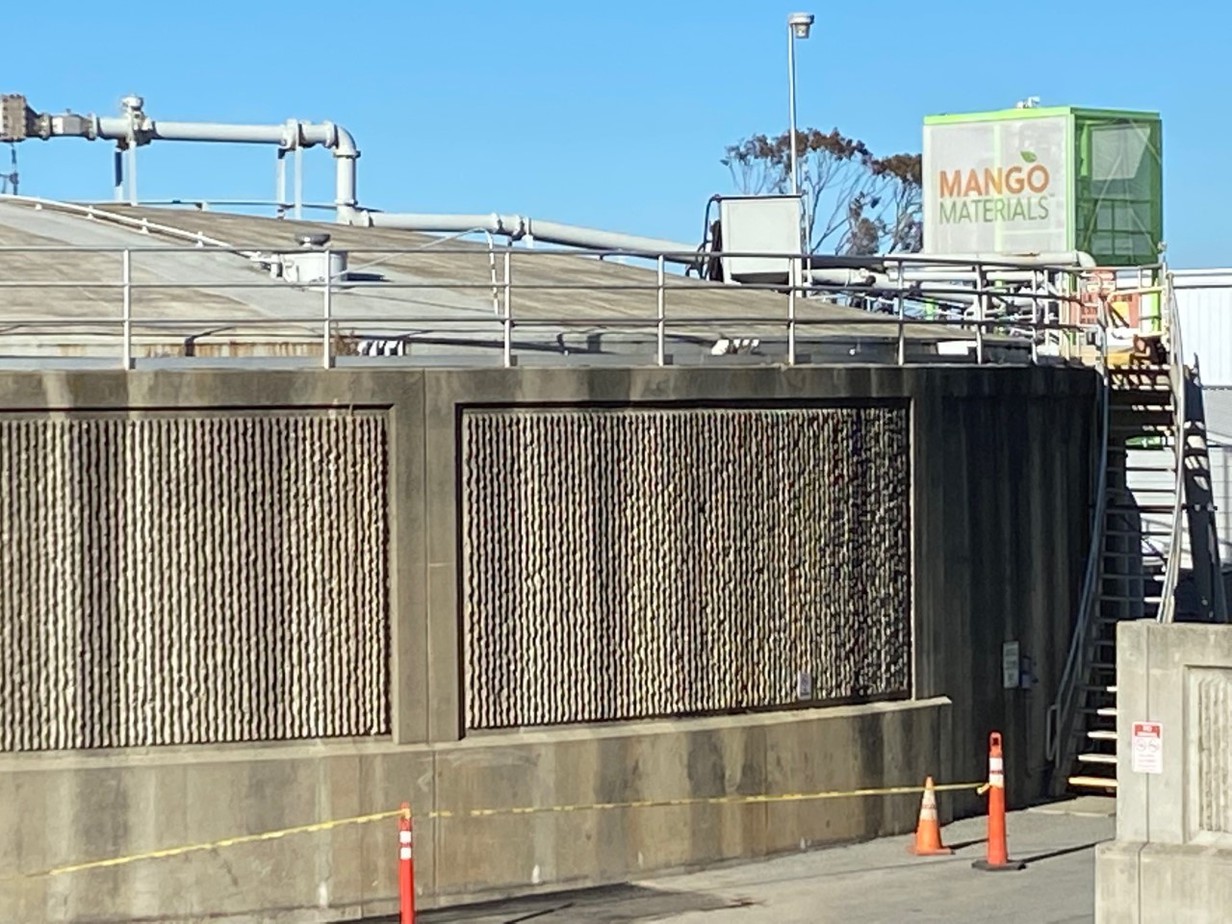New Technologies
SVCW’s leadership to partner with universities, Federal and State agencies, and private companies to support the development of innovative technologies provides significant benefits to our rate payers. Every day, the water, energy, and solids management fields are showing advances in technology to improve water treatment processes, produce and save energy, meet new regulations, protect our environment, and recover limited resources at a lower cost. SVCW’s innovative perspective to continually learn about and research new ways to treat water at a lower cost and reduce our impact on the environment increases our region’s ability to become more sustainable and self-reliant for current and future generations.
Recent Projects
Fournier Press

Also known as Rotary Presses, these machines dewater our biosolids that come out of our anaerobic digesters. They replaced our outdated centrifuge, which was a mechanical and operational nightmare, and have two primary benefits:
- Their energy use is very low
- They can produce a dewatered “cake” –concentrated dry waste– with a wide range of percentage of solids (10 to 25%)
Producing cake makes for an easier, and more cost-effective disposal, including reducing transportation costs, which lowers our carbon footprint and advances our sustainability goals.
How do these presses work their magic? First the solids are thickened in our Gravity Belt Thickener, bringing the percentage of solids to about 5%. The thickened solids are fed to the Anaerobic Digesters, and after approximately 28 days, the digested solids are dewatered in the Fournier Presses.
Depending on where the dewatered solids are going, they’re either:
- Dewatered to 8% to 10% solids content, which go to our Solar Drying Beds; or,
- Dewatered to 22% to 23% solids content, which go to the BioforceTech Dryers.
Fournier is a Canadian company who approached us years ago with this new technology, and our pilot testing was so successful, and so much more sustainable than our old technology, that we made acquiring them a priority. We recently purchased a second bank of presses that are currently being tested and will soon be part of our operations.
SAF-MBR
Research projects like food waste co-digestion and SAF-MBR (Staged Anaerobic Fluidized bed-Membrane Bioreactor) are two promising new ideas to increase our renewable biogas generation.
What is SAF-MBR?
Pronounced “Safe” MBR, Staged Anaerobic Fluidized bed-Membrane Bioreactor combines two commercially available technologies, Anaerobic Fluidized Bed Reactor and a Membrane Bioreactor, into one process. It uses anaerobic microbes to help purify water instead of their aerobic cousins that currently require a remarkable 1% of the nation’s electricity demand to treat water, a technology that hasn’t changed for more than 100 years.
Assisting in the development of new innovative approaches like Staged Anaerobic Fluidized bed-Membrane Bioreactor (SAF-MBR) can provide operational, environmental, and economic benefits to our facility for our 220,000 customers and to the water treatment industry in general. Collaborating with research partners like Stanford University, the Codiga Resource Recovery Center and the California Energy Commission (CEC) helps SVCW participate and keep informed of pivotal shifts in technologies that reduce costs in our industry.
Mango Materials
Mango Materials and SVCW created a unique Public-Private Partnership in 2011. In 2012, the company operated small bioreactors at SVCW to demonstrate that its novel process could successfully replicate naturally produced biopolymers using untreated biogas drawn straight from an anaerobic digester. In 2015, Mango Materials constructed a 500-liter pilot plant on site to convert biogas into biopolymer, which has been up and running since. For more information about Mango Materials, go here mangomaterials.com.
Food Waste to Energy
SVCW has been exploring organics co-digestion for over a decade. In 2014, SVCW signed a a memorandum of understanding with its sister agency South Bayside Waste Management Authority (SBWMA) to collaborate on separating organics from its waste stream and co-digesting in anaerobic digesters. The goal of this project was to receive organics extracted from the municipal solid waste (MSW) stream, process it onsite and introduce it to digesters to augment digester gas production.
Unlike source separated organics (SSO) that are used for co-digestion by many wastewater treatment plants, the MSW stream (also referred to as “black bin waste”) is not permit-exempted for use by CalRecycle for co-digestion and is currently disposed in the landfill. The pilot project was the result of a California Energy Commission (CEC) grant to test the impact of black bin waste co-digestion into digesters. The pilot project completed in March 2019 and a report was generated for CEC. Successful demonstration of MSW-extracted organic waste for co-digestion will eventually facilitate the exemption of this waste and facilitate diversion of a large source of organic waste for renewable energy generation. Preliminary evaluations indicate a potential 100% increase in biogas production due to the addition of this food waste.

